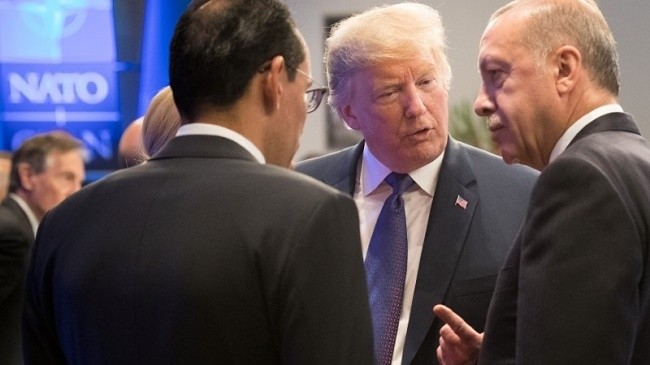US President Trump put pressure on his military allies by emphasising that the NATO member states must spend 2% of their GDP on defense immediately, not up to 2025. He reconfirmed the issue his Twitter page. Earlier, Trump harshly criticised the US’s partners in NATO, complaining that the US is being “taken advantage of” by other members. He even claimed that NATO is “as bad as NAFTA”, a North American trade deal that he considers a threat to US security.
The US urged the NATO members to increase their defence budgets, as Washington has been “shouldering” most of the bloc’s defence expenditure burden. According to statistics, the US currently accounts for nearly 72% of NATO’s total defence spending, and, ahead of the NATO summit, only three European nations had spent 2% of their GDP on defence, namely the UK, Greece and Estonia. Although the NATO members have agreed to achieve the target of increasing their defence spending to 2% of their GDP since 2014, only a handful of them have been implementing the aforementioned goal.
In early July, President Trump sent a letter to German Chancellor Angela Merkel, Canadian PM Justin Trudeau, and the leaders of Belgium and Norway, demanding that they fulfill their commitments to increasing their defence budgets. Previously, he also “hinted” at the need to consider the relocation of US troops in European countries if they did not increase their defence spending. The pressure made by the US President seemed to have worked out, immediately before the NATO summit, seven EU members, including the UK, Greece, Latvia, Estonia, Poland, Latvia, and Romania pledged to raise their defence spending to 2% of their GDP in 2018. Earlier, at an EU summit in late June, the leaders of the EU nations also affirmed that the bloc would increase defence spending in order to strengthen the alliance’s strategic self-reliance and avoid “dependence on the US”.
The issue of defence spending was a “hot” topic at the NATO summit as well as in the US-EU relations in the context of US President Trump’s guideline of implementing the “America First” policy. Meanwhile, NATO’s budget needs remain huge as the alliance wants to maintain its influence in many parts of the world. At the summit, the NATO members decided to extend their financial support to the Afghan army by 2024. The statement of the summit on July 11 called for closer cooperation between partners in fighting terrorism, improving the conditions for economic development, and supporting the Afghan Government’s peace and reconciliation efforts.
The US President’s drastic move in pressuring the NATO countries to increase their defence spending could help the US to reduce its responsibilities and allow NATO to have sufficient funding for the realisation of its goals and ambitions. However, this is also an “apple of discord” causing internal divisions in NATO. In fact, disagreements over the defence budget issue have caused the relationship between the US and its Western allies to rupture significantly since President Trump took office. In the future, the issue will certainly remain a matter that divides the US and a number of other NATO member countries.
In addition, the NATO members’ increasing their defence spending under pressure from the US is also facing opposition and grievances of the people in many European countries. Just ahead of the NATO summit, thousands of people took to the streets in protest with banners favouring peace and opposing wars. The protesters said that NATO was wrong to focus on militarisation and ignore the real battles, such as the fight against poverty or the protection of the Earth from risks posed by climate change and migrants. Analysts stated that in the aforementioned context, even though President Trump will possibly “win” in NATO summit’s agenda on the issue of defence spending, he may still “lose” in the US’s foreign affairs with Europe.
















